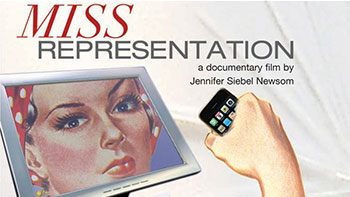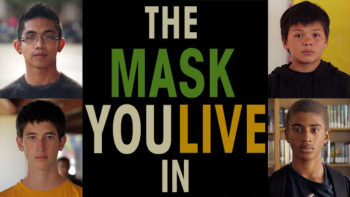by Rachel Grate
“For the first time since 1994, the Violence Against Women Act is no more.” –The Maddow Blog
Apparently, only some women are worthy of protection against violence. The Violence Against Women Act had been reauthorized without significant challenge in 2000 and 2005, but because the new version of the bill would extend protection to 30 million more women, House Republican leadership did not reauthorize the bill in 2012.
Essentially, in these politicians’ eyes some women are unworthy of the bill’s protection – specifically Native Americans, immigrants, and LGBT women who would have been included under the new bill.
Native American women are twice as likely as other demographics in the U.S. to be sexually assaulted, according to the Justice Department. One in three Native American women will be raped in their lifetime. About ten percent of hate crimes against gay men and lesbians include sexual assault. The Human Rights Watch found that at least 50% of the agricultural work force is undocumented immigrants, who cannot come forward about sexual assault because of fear of deportation.
In Jessica Valenti’s 2009 book The Purity Myth, she observed that, “The rates of sexualized violence against women of color in the United States are far higher than those regarding white women. In fact, violence against white women is actually declining, while it continues to increase among women of color… [T]he average annual rate of intimate-partner violence from 1993 to 2004 was highest for American Indian and Alaskan Native women – 18.2 victimizations per one thousand women.”
Why are the women who are most in need of support the women House Republicans are least willing to protect?
Valenti argues that “it’s not possible to prove that these increased rates of violence in particular communities are a direct result of society’s positioning women of color as impure. But a society that portrays them as such absolutely contributes to a culture of violence against them – women who transgress purity norms are punished, and women of color transgress simply by not being white.” Similarly, in consideration of which women House Republicans opposed protecting, LGBT women transgress simply by not following the heterosexual purity guidelines.
We have seen other politicians punish women for transgressing these purity norms recently with the constant redefinitions of rape. From Todd Akin’s now infamous “legitimate rape” qualification to Roger Rivard’s “some girls rape easy,” it is clear that these Republicans only believe a certain type of women can be raped – women who meet their preconceived idea of purity. And while these men lost the election, the House Republican leadership is perpetuating the same beliefs that only certain women – chaste, white women – are worthy of protection.
You don’t have to look far to see these beliefs reflected and reinforced by popular media. Native American culture is constantly overtly simplified and sexualized. In the past year alone, Victoria’s Secret featured a Native American headdress in their fashion show (removed from the TV screening), No Doubt pulled their stereotypical cowboys-and-Indians themed “Looking Hot” music video after backlash, and the Navajo Nation sued Urban Outfitters for using the Navajo name to sell products like underwear and a flask.
Native American women suffer from these sexual appropriations of Native American culture, and they’re not the only ones. This sexualization is rampant in the media concerning all minorities – the same minorities, incidentally, that the House doesn’t want to protect from violence. Because such portrayals sexualize these demographics, these women lose the protection of “purity” – they lose the respect of men who believe women’s worth lies in their sexuality. This leads to the high rates of sexual assault of women of color, and to politicians considering these women unworthy of protection, all based on stereotypes perpetuated by the media.
After all, as politicians (of both parties) have expressed time and time again, rape only counts if the woman was pure. It’s this idea that’s reflected in our media, and by both our law makers and law enforcers. SlutWalks, for instance, were created in response to Toronto Police Officer’s statement that “women should avoid dressing like sluts in order not to be victimized.” The problem with this statement – beyond it’s obvious victim blaming – is that no matter how modest one woman’s outfit is, it can’t undo the widespread sexualization of women in the media that is too easy to internalize.
When the media portrays women as objects, or only valuable if they meet a racialized standard of purity, it creates a rape culture in which no woman is safe. A rape culture that the Violence Against Women Act had helped to combat.
It’s important to note that this is not a political issue. This is a human rights issue. Nonetheless, House Republicans refused to support the measures expanding protection to millions more women because they considered them “politically driven.”
Despite this political party divide, only 2 of 25 Republican Women in the House opposed reauthorizing the bill, and even those 2 seemed willing to compromise. The Senate had approved the bill 68 to 31, and the bill was co-written by conservative Mike Crapo from Idaho. This divide isn’t political – it’s ideological. It’s a divide between those who respect women, and those who only respect women who have earned their approval by fitting their standards of purity. The latter isn’t truly respect at all.
This is not the end of the Violence Against Women Act. The 2005 version of the bill will continue until a new version is passed, though its services are threatened by budget crises. Because of these economic difficulties, if a new version of hte bill is not approved, it is estimated that 200,000 victims of violence will lose services.
Senator Patty Murray has promised to reintroduce the bill in 2013. But if we want real change, in both our politics and our personal lives, we have to go further than a temporary fix.
It’s time to end the “purity myth.” We need to challenge these degrading, sexualized portrayals of women and acknowledge that all women are worthy of respect, regardless of their ethnicity or sexuality. This is what MissRepresentation.org has dedicated itself to, and we hope you and the 113th Congress sworn in Thursday will join us.
Rachel Grate is an Editorial Intern at MissRepresentation.org and a student at Scripps College, where she is studying English and Gender & Women’s Studies. Connect with her via LinkedIn or read more of her work on her blog.



